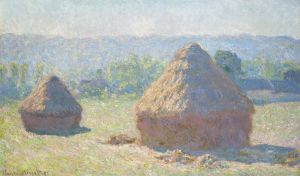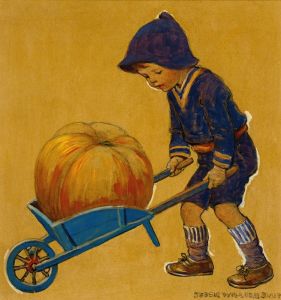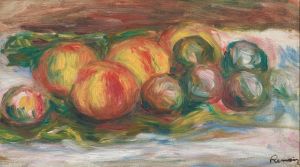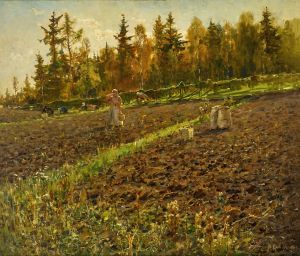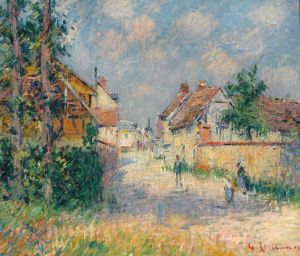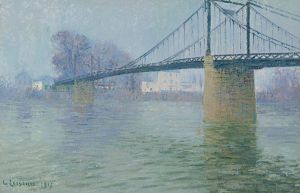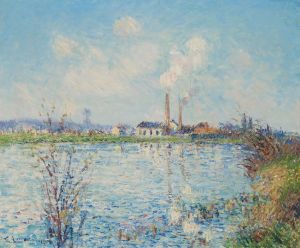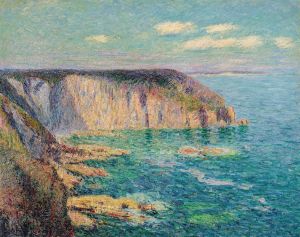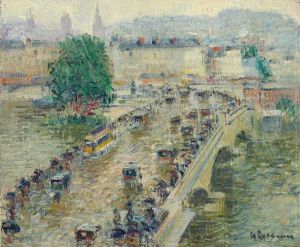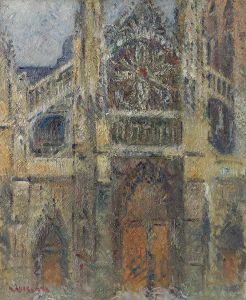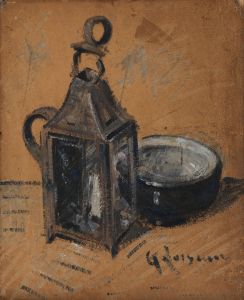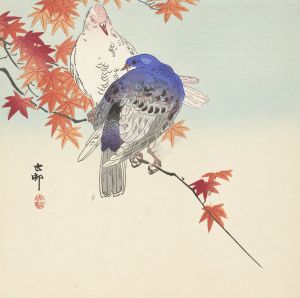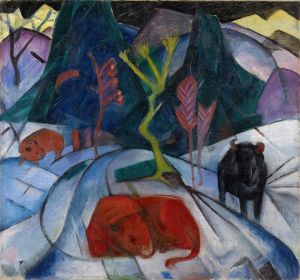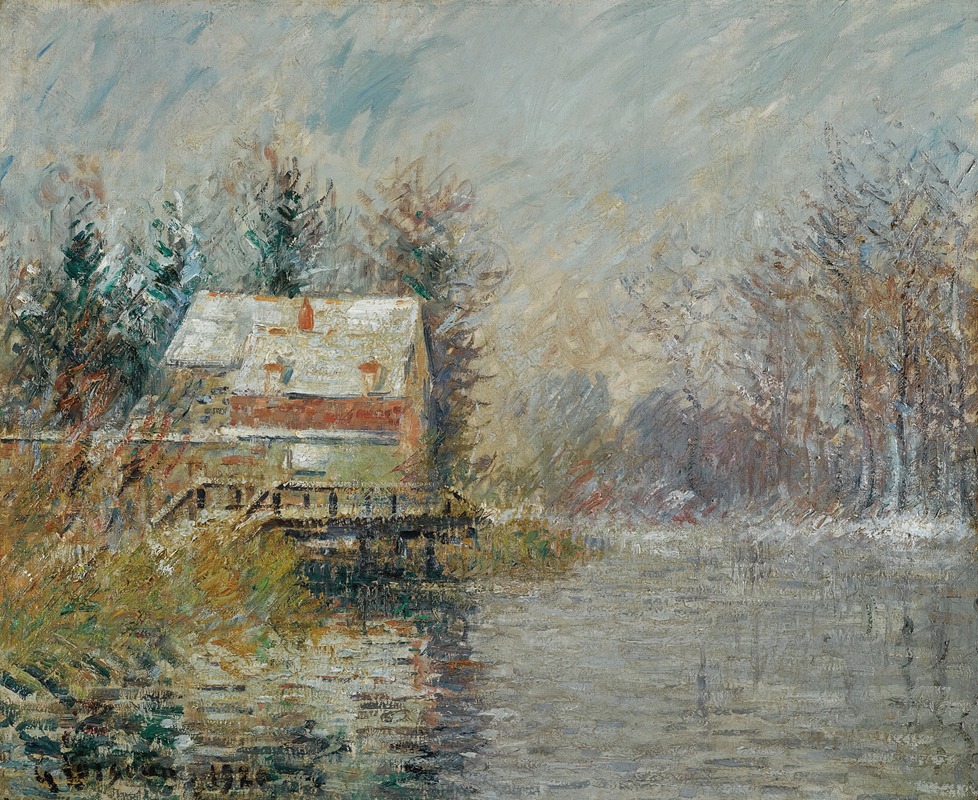
Maison Au Bord De L’eau, Effet De Neige
A hand-painted replica of Gustave Loiseau’s masterpiece Maison Au Bord De L’eau, Effet De Neige, meticulously crafted by professional artists to capture the true essence of the original. Each piece is created with museum-quality canvas and rare mineral pigments, carefully painted by experienced artists with delicate brushstrokes and rich, layered colors to perfectly recreate the texture of the original artwork. Unlike machine-printed reproductions, this hand-painted version brings the painting to life, infused with the artist’s emotions and skill in every stroke. Whether for personal collection or home decoration, it instantly elevates the artistic atmosphere of any space.
Gustave Loiseau was a French Post-Impressionist painter known for his landscapes and scenes of rural life. Born on October 3, 1865, in Paris, Loiseau developed a distinctive style characterized by his use of vibrant colors and dynamic brushwork. He was particularly interested in capturing the changing effects of light and atmosphere, a hallmark of the Impressionist movement, which he adapted into his own unique approach.
"Maison Au Bord De L’eau, Effet De Neige" is one of Loiseau's notable works, showcasing his fascination with the interplay of light and nature. The title translates to "House by the Water, Snow Effect," indicating the painting's subject matter—a serene winter scene featuring a house by a body of water, enveloped in snow. This painting exemplifies Loiseau's ability to convey the tranquil beauty of the French countryside, a recurring theme in his oeuvre.
Loiseau's technique often involved the use of short, brisk brushstrokes to create a sense of movement and texture, a method that is evident in "Maison Au Bord De L’eau, Effet De Neige." The painting captures the subtle variations in light and color that occur during winter, with the snow-covered landscape rendered in soft, muted tones. The reflection of the house and surrounding trees in the water adds a layer of depth and realism to the composition, inviting viewers to immerse themselves in the peaceful scene.
Throughout his career, Loiseau was associated with the Post-Impressionist movement, which sought to build upon the innovations of Impressionism while exploring new directions in color, form, and expression. He was influenced by the works of Claude Monet and Camille Pissarro, both of whom were pioneers of Impressionism. Loiseau's paintings often reflect a synthesis of their techniques, combined with his own distinctive style.
Loiseau's dedication to capturing the essence of the natural world led him to travel extensively throughout France, painting en plein air to observe and record the changing seasons and weather conditions. His works frequently depict scenes from regions such as Normandy, Brittany, and the banks of the Seine River. "Maison Au Bord De L’eau, Effet De Neige" is likely a product of these travels, as it embodies the artist's commitment to portraying the beauty and diversity of the French landscape.
The painting is part of Loiseau's broader body of work that includes numerous depictions of rural life, village streets, and river scenes. His ability to convey the atmosphere and mood of a particular moment in time has earned him a place among the respected artists of his era. Today, Loiseau's paintings are held in various public and private collections, appreciated for their contribution to the Post-Impressionist movement and their enduring appeal.
Gustave Loiseau passed away on October 10, 1935, in Paris, leaving behind a legacy of art that continues to captivate audiences with its vibrant portrayal of the natural world. "Maison Au Bord De L’eau, Effet De Neige" remains a testament to his skill and vision as an artist, reflecting his lifelong passion for capturing the fleeting beauty of the landscapes he so dearly loved.





